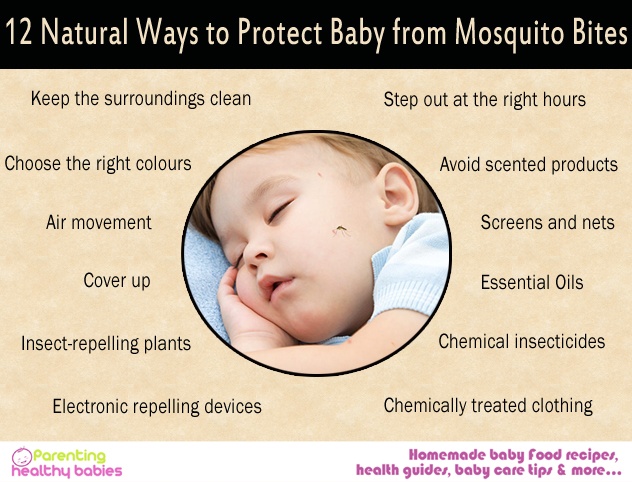Sleeping in proper position, avoiding wedge pillows, changing sleeping positions, holding the baby often, using corrective helmets, taking the pressure off and checking constantly are some of the effective ways to prevent flat head syndrome in babies.
Plagiocephaly, sometimes referred to as “Flat Head Syndrome”, is an asymmetrical distortion of one side of the skull. Unfortunately, it is quite common in babies. About 1 in 60 babies suffers from it. This distortion develops if the baby’s head forms a lasting flat spot either on one side of the head or on the back. This unevenness of the head is the result of letting the baby sleep in one position for too long, or due to problems in the neck muscles due to which the head remains tilted to one side for too long. Babies are born with soft heads to allow space for the tremendous growth of the brain that takes place during the first year of their lives.
Fortunately, plagiocephaly doesn’t cause any brain impairment, and it doesn’t need corrective surgery. There are some simple measures you can take to prevent your child from developing the flat head syndrome. There are some simple activities that can help to correct the shape of your baby’s head, if you notice that he/she is starting to develop a distortion in the head.
10 Effective Ways to Prevent Flat Head Syndrome in Babies
Sleep in proper position
The most common cause why plagiocephaly develops in babies is that they sleep on their backs for extended periods of time. Sometimes babies may be placed in devices where they have to be in the same position for long periods of time, such as baby car seats, strollers, swings, etc., which adds considerable to the problem. Always try to place your baby in a comfortable position and change positions often, so that his/head doesn’t face pressure on just one side of the head, constantly. This will prevent distortion of the head.
Read More:Tips on Handling Sleep Problems In infants
Do not use wedge pillows
Babies have the habit of moving around a lot in sleep. This naturally prevents the head from forming bumps or other distortions. But sometimes parents think that this constant moving affects the quality of sleep of the baby, and they use wedge pillows to hold the baby in one position. This can lead to plagiocephaly. Experts and doctors do not recommend using such devices. As long as your baby is asleep, it shouldn’t be a concern if she’s constantly changing positions in her sleep.
Change positions while the baby sleeps
When your baby is sleeping, be it at home or when you’re out, make sure to constantly change the position he or she is sleeping in. This will prevent his or her head from getting distorted, and also prevent his or her body from developing aches from sleeping in one position for too long. However, be careful while changing positions, because you don’t want to wake your baby up and affect his/her sleep.
Alternate sleep positions in the crib
Most parents are right-handed. Therefore, they carry their infants cradled in their left arms and put them down in the crib with their head to the left. While in this position, the baby has to turn to its right side to look out of its crib, at its surroundings. This is why cranial distortion on the right side of the head is far more common in babies than on the left side. To prevent this, you have to keep alternating the positions in which you put your baby down in the crib. If you see your baby’s head starting to flatten on one side, be sure to place him/her in positions that will encourage active turning of the head to the other side.
Read More: 12 Best Baby Cribs for your New Born
Hold your baby more often
This is one of the best ways of preventing plagiocephaly. Try as much as you can to lessen the amount of time your baby spends lying on his back or to his side against hard surfaces such as car seats, strollers, swings, etc. If you are putting him down to sleep, try to place him on a soft surface like a mattress instead of, say, the couch. However, the best way to prevent any pressure on your baby’s head overall is to hold him as often as you can when he is falling asleep. This will prevent distortion of your baby’s head. Besides, more contact with the parents invariably means a happy baby.
Tummy Time
Get as much of “tummy time” as you can with you baby. Tummy time is an activity to do with your baby where he lies on his (sometimes on your) stomach and looks around at his/her surroundings. This promotes natural shaping of the back of his head. Besides, tummy time makes for some beautiful parent-child bonding time. It also helps the child to develop and strengthen arm and shoulder muscles, which will be helpful when he finally starts to crawl.
Read More: 11 Reasons Why Tummy Time Is Important For the Infant
Get a corrective helmet
Sometimes, especially in multiple births such as that of twins and triplets, the heads of the babies can be a little distorted. If that lasts for too long, your doctor may ask you to get corrective helmets and other gear for your baby to wear; this will mold his or her head to the right shape. However, do not decide to get any such gear without prior consultation with or recommendation of a doctor. Once your baby’s head shape is restored, you can take the above mentioned measures to ensure it remains that way.
Keep your baby away from inclined surfaces
Inclined surfaces could worsen flat head syndrome in the baby. Placing your baby to sleep on inclined surfaces may be quite comfortable but could potentially lead to misshaping of the baby’s head or could, in some cases, form dents in the baby’s head. When placing your baby on an inclined surface, make sure to take care your baby sleeps on inclined surfaces for not more than three hours a day. Any more time than that could cause or contribute to plagiocephaly.
Keep checking constantly
Keep a close eye on the shape of your baby’s head from the moment you get home from the hospital. The best way to look at it is from a “bird’s eye view” or looking down on it. This is how you can tell if there is any flattening or asymmetry. Another way is to run your hands you’re your baby head to see if any flat areas or bumps have formed. Typically the flattening will begin in the back so that is a good place to start. If you see any, let your pediatrician know so you can address it right away.
Take pressure off
If you notice any flattening areas in your baby’s head, take the pressure off the flat spot so your baby’s head can round out as it grows. This involves moving your baby’s head, in order to make sure she does not rest on the flat spot, by consistently repositioning her head to lie on the rounder side. You can also encourage your baby to look to the less preferred side by moving her toys and/or moving her cot.
These are some steps you can take to prevent plagiocephaly in your bay. All babies have soft heads at birth, so it is your duty as a parent to take the necessary precautions to make sure your child’s head remains smooth and doesn’t flatten out due to bad posture. Also, if there are some minor flat areas in your baby’s head that have remained despite taking these measures, do not panic, there is chance that it may get eliminated as your baby’s head hardens as she matures and grows.
References
https://www.flourishpaediatrics.com.au/cms-a-z-paediatric-problems/paediatric-h/heads-large-small-and-odd-shapes/prevention-of-plagiocephaly.phps













